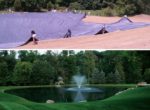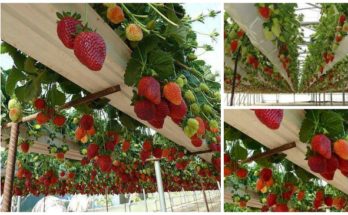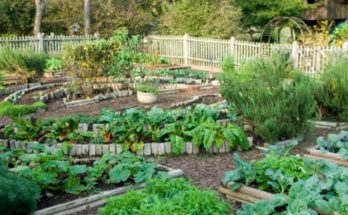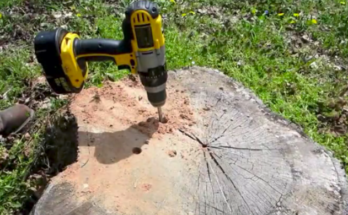They can be any size, whether just a little pond for some fish and flowers to small lakes if you have the space. How to do this: well, you need to excavate the space, then you need to form the contours of it (you can use dirt, but you can also use hay bales, cement, rocks, or anything else), then make a watertight basin (with a pond liner or big special plastic sheet, often), then fill it in with gallons of water. There you go, your own back yard pond (or pool).
We came across a guy who used to write about making these things. If he still does it, the number for this guy — the Pond Guy — is 866-766-3435. Here’s the way he describes the basics of how he got into making back yard ponds and pools:
Q: I built a home a few years ago and in the process we needed a large amount of fill dirt. Under the recommendation of my builder we decided to dig a pond for the fill dirt. I was told by my excavator that it would take several months for my pond to fill. It is now 3-years later and I have no water! Over the last several years I have tried lining my pond with blue clay and bentonite with no success. I know you sell liners. Will they work for a ½ acre pond? – Rick of Illinois
A: Yes. A pond liner is the only way you can guarantee to have a leak proof seal.
If you would like to explore the possibility of a liner, then you will need to gather a few pieces of information so we can best help you:
1) Existing Water – Many ponds retain some water. We do not recommend lining a pond that contains more than 25% of its fill capacity for any extended period of time. Unless you plan to put at least 2’ of soil on top of the liner or make provisions to drain the water from under the liner.
2) Measure Your Pond – This is best accomplished by using a flexible tape measure (available at Home Depot / Lowes). Stretch the measuring tape from water line to water line allowing the tape to contour to the pond’s bottom. In general, we recommend adding an additional 5′ to 10’ to this number to make up for the liner settling and the anchoring trench.
For information on how to do these big (like fishponds), there’s The Pond Guy.












